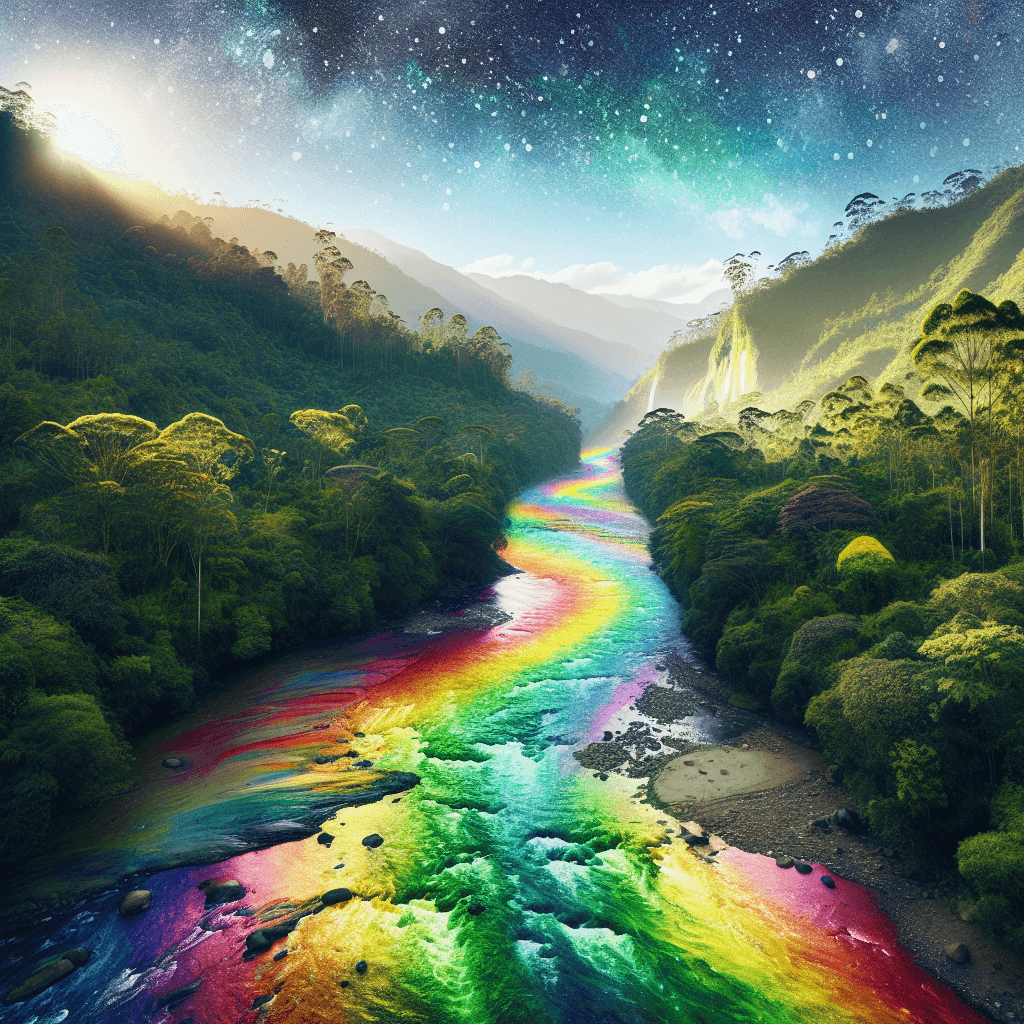Why does a river in Colombia turn into a liquid rainbow every year
For a few fleeting months each year, a river in Colombia bleeds a rainbow of brilliant colors, and the secret behind this living spectacle is even more incredible than it looks.


Too Long; Didn't Read
TLDR: For a few months each year, a unique aquatic plant called Macarenia clavigera blooms on the riverbed of Colombia's Caño Cristales. When water levels and sunlight are just right, the plant turns brilliant shades of red, pink, yellow, and green, creating the liquid rainbow effect.
Blog Post Title: The Liquid Rainbow of Colombia: Why Does the Caño Cristales River Explode with Color Every Year?
Imagine a river that flows not with clear or murky water, but with brilliant streams of red, yellow, green, and blue. This isn't a fantasy; it's a real place deep within Colombia's Serranía de la Macarena National Park. Known as Caño Cristales, or the "River of Five Colors," this natural wonder transforms into a breathtaking liquid rainbow for a few precious months each year. While it may look like magic, this spectacular display is the result of a unique and perfectly timed biological phenomenon. This post will explore the fascinating science behind why this Colombian river puts on its vibrant annual show, revealing the delicate interplay of biology, sunlight, and season.
The Secret Behind the Crimson Tide: Meet Macarenia Clavigera
The primary artist behind the river’s stunning transformation is not algae, minerals, or pollution. The vibrant red and pink hues that dominate Caño Cristales come from a unique aquatic plant called Macarenia clavigera.
This plant is endemic to this specific region, meaning it grows here and almost nowhere else on Earth. For most of the year, during the long rainy season, Macarenia clavigera appears as a rather dull, mossy green plant clinging to the riverbed. The deep, fast-flowing water diffuses the sunlight, preventing the plant from revealing its true colors. But as the seasons change, so does the river, setting the stage for its dramatic metamorphosis.
The Perfect Storm: A Matter of Sun and Water
The "liquid rainbow" phenomenon is entirely dependent on a short, specific window of time between the wet and dry seasons, typically from late June to November. During this period, the conditions become absolutely perfect for the Macarenia clavigera to flourish and reveal its colors.
- The Right Water Level: As the rainy season ends, the water level in Caño Cristales drops significantly. This is the crucial first step. The shallower water allows sunlight to penetrate all the way to the riverbed and reach the plant.
- The Power of Sunlight: When the intense tropical sun hits the Macarenia clavigera, the plant begins to produce massive amounts of red pigments, known as anthocyanins. According to botanists, this is a protective response, similar to how human skin tans to shield itself from UV radiation. The more direct and intense the sun, the more brilliant and fiery the shade of red.
If the water is too deep, the plant remains green. If the river dries out completely in the peak dry season, the plant will wither and die. It is only in this "in-between" season that the water level and sunlight are perfectly balanced to create the breathtaking crimson streams.
Crafting a Full Rainbow: More Than Just One Plant
While the red of the Macarenia clavigera is the star of the show, it doesn't work alone. The river’s nickname, "The River of Five Colors," is earned through a combination of elements that come together to paint a complete picture.
- Red and Pink: The vibrant blooms of the Macarenia clavigera.
- Yellow and Green: Patches of colored sand and other species of green algae on the riverbed.
- Blue: The natural, crystal-clear water reflecting the sky, unpolluted by sediments due to the ancient, hard rocks of its riverbed.
- Black: The dark, ancient quartzite rocks of the Guiana Shield, which form the riverbed and provide a stark, beautiful contrast to the bright colors.
This combination turns the river into a living, flowing mosaic, with each color distinct yet perfectly blended. To protect this incredibly fragile ecosystem, tourism is highly regulated. Visitors are not allowed to use sunscreen or insect repellent in the water, as the chemicals can harm the delicate Macarenia clavigera.
Conclusion
The liquid rainbow of Caño Cristales is a powerful reminder of nature's intricate and delicate artistry. It is not an illusion, but a perfect convergence of unique biology, precise seasonal timing, and the ancient geology of its remote location. The annual bloom of the Macarenia clavigera, triggered by the perfect balance of sun and water, offers a spectacular display that underscores the importance of conservation. This Colombian treasure is more than just a beautiful river; it is a testament to the fragile, complex ecosystems that exist in the world, waiting to be understood and, most importantly, protected for generations to come.
More Articles

Why do movie punches sound so much crunchier and louder than real ones?
That sickening, bone-crunching punch you hear in the movies is a lie, and the secret ingredient is probably sitting in your refrigerator right now.

What makes a beer bottle suddenly foam over just from a light tap on top?
It’s not magic, it’s a shockwave; discover the explosive physics that turns a gentle tap on your beer bottle into an instant foamy geyser.

Why do police officers touch the back of a car during a traffic stop?
It’s not a random habit; that simple touch is a calculated, old-school tactic designed to leave a crucial and potentially life-saving piece of evidence behind.